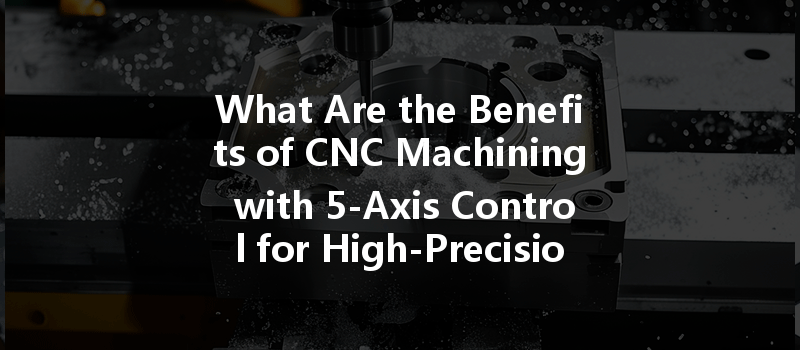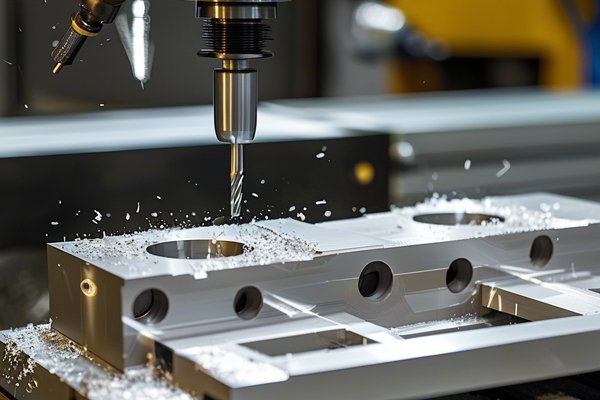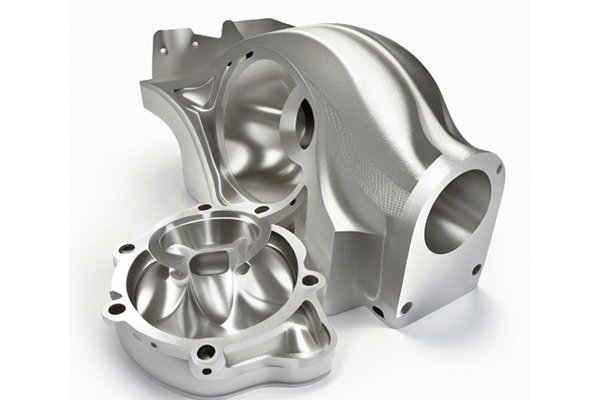Did you know that as of 2023, around 50% of manufacturing companies have adopted advanced CNC (Computer Numerical Control) machining technologies to improve efficiency and precision? As industries increasingly demand tighter tolerances and complex geometries, CNC machining with 5-axis control has emerged as a game changer in the world of precision engineering.
Are you curious about how 5-axis CNC machining can elevate the quality of components in your manufacturing process? If so, this comprehensive guide will provide you with in-depth insights into the remarkable benefits of 5-axis CNC machining. We’ll read through the intricacies of CNC technology, explore real-world applications, and give you the tools you need to leverage this modern manufacturing marvel effectively.
—
Section 1: What Is 5-Axis CNC Machining?
Before diving into its benefits, it’s essential to understand what 5-axis CNC machining involves. In its simplest terms, CNC machining uses programmed computer software to control machine tools for manufacturing parts. The “5-axis” refers to the ability of the machine to move a tool or workpiece along five different axes simultaneously. These movements include:
This multi-axis motion differs significantly from 3-axis machining, which operates only on three planes. The added dimensions allow for continuous rotation of the workpiece, enabling the production of complex shapes with significantly improved precision.
—
Why 5-Axis CNC Machining?
In this section, we will explore the primary reasons businesses worldwide are displaying a keen inclination towards adopting 5-axis CNC machining.
With 5-axis CNC machining, manufacturers can achieve precise tolerances that are often unattainable using traditional machining methods. The ability to manipulate the cutting tool and workpiece simultaneously allows for consistent accuracy, minimizing errors. This precision is crucial in industries where even the slightest imperfection can lead to product failure.
5-axis machining significantly reduces setup time. The ability to mill all sides of a part in one operation minimizes re-clamping and reduces the number of setups required. This not only speeds up the production process but also ensures that the parts remain in the same position throughout machining, further enhancing accuracy.
Modern products often feature intricate designs that are challenging to produce efficiently and accurately. The capability to work at various angles means that engineers can create complex geometries that fit the exact specifications of their design. This feature is especially beneficial in industries such as aerospace, automotive, and medical where specialized parts are paramount.
The increased cutting tool angles provided by 5-axis machining contribute to smoother, more refined finishes on components. A better surface finish not only enhances aesthetics but also improves functionality, especially in applications requiring tight fitting parts.
5-axis CNC machining is not limited to a specific type of material. Manufacturers can work with a range of materials, including metals like aluminum, titanium, brass, and plastics. This adaptability allows businesses to diversify their product offerings and respond to varying market demands.
—
Section 3: Real-World Applications of 5-Axis CNC Machining
In aerospace manufacturing, precision is non-negotiable. Parts such as turbine blades, brackets, and housings often require multi-axis machining to meet stringent safety standards while achieving weight reductions. The ability to create complex shapes with high accuracy makes 5-axis machining an ideal choice for this industry.
The automotive industry increasingly relies on advanced manufacturing technologies, particularly for components that require specialized geometries. Whether it’s custom gear housings or engine components, 5-axis CNC machining equips manufacturers to create high-quality parts that meet rigorous performance criteria.
Precision components such as surgical instruments and prosthetics are crucial in the medical field. 5-axis CNC machining allows for the rapid and dependable production of custom parts that can be tailored to specific patient needs, enhancing the quality of care.

In defense manufacturing, the production of high-precision components for aircraft, naval vessels, and ground vehicles is critical. 5-axis CNC machining enables defense contractors to produce complex and stringent designs that comply with military standards.
As the consumer electronics sector continues to innovate, manufacturers must find ways to deliver intricate and compact designs. 5-axis CNC machining is used to produce sophisticated casings and components that house delicate electronics while ensuring maximum functionality.
—
Section 4: Challenges and Solutions in 5-Axis CNC Machining
While the benefits are substantial, challenges arise with 5-axis CNC machining, particularly for newcomers in the industry. Here are some common challenges followed by solutions.
Challenge: 5-axis machines can be complex to set up, requiring skilled operators with experience in multi-axis machining.
Solution: Invest in training and ongoing education programs for operators. Utilizing simulation software can also help operators visualize the machining process before actual production begins.
Challenge: The initial investment for 5-axis CNC machines can be higher compared to their 3-axis counterparts.
Solution: Focus on long-term cost savings by highlighting the efficiency, reduced waste, and enhanced productivity that 5-axis machining brings. Leasing options may also alleviate upfront costs.
Challenge: Programming a 5-axis CNC machine can be daunting due to increased axis control and complexity.
Solution: Use advanced CAM (Computer-Aided Manufacturing) software that simplifies the programming process. Certain software includes pre-built templates and libraries for standard operations that can accelerate the programming process.
—
Section 5: Best Practices for Implementing 5-Axis Machining
Here are some best practices to ensure a successful implementation of 5-axis CNC machining in your manufacturing processes:
Selecting a machine based on your specific needs—such as the types of materials you’ll be using, the complexity of the parts, and production volume—is crucial for maximizing your investment.
Keeping the CNC machine in top condition is vital for consistent performance. Implement a preventive maintenance schedule to minimize downtime and maintain precision over the machine’s lifecycle.
Invest in high-quality tools that are compatible with your material choices and machining processes. The right tools can significantly affect machining time and overall surface finish.
Before mass production, conduct thorough test runs to assess machining processes and calibrate the machine settings. This will help in identifying issues early and eliminating costly errors.
Continually analyze manufacturing processes and the performance of the machine. Utilizing metrics like production time, waste, and quality can help identify areas for improvement.
—
CNC machining with 5-axis control is undoubtedly transforming the landscape of manufacturing, offering remarkable benefits in precision, efficiency, and the capability to produce complex geometries. This niche has paved the way for industries to harness advanced manufacturing techniques that meet the rigorous demands of modern production.
Whether you’re operating in the aerospace sector, medical field, or automotive industry, the adoption of 5-axis CNC machining can lead to substantial advancements in production quality and operational efficiency.
As we move ahead into an increasingly technology-driven landscape, the importance of incorporating advanced methods like 5-axis CNC machining becomes paramount. This is not just about keeping up with innovation; it’s about defining it. Adopting these techniques can put your business at the forefront of your industry, allowing you to stand out in an ever-competitive market.
With this understanding, we encourage you to explore the potential of 5-axis CNC machining and consider how it can enhance your manufacturing capabilities. After all, the future belongs to those who innovate.






